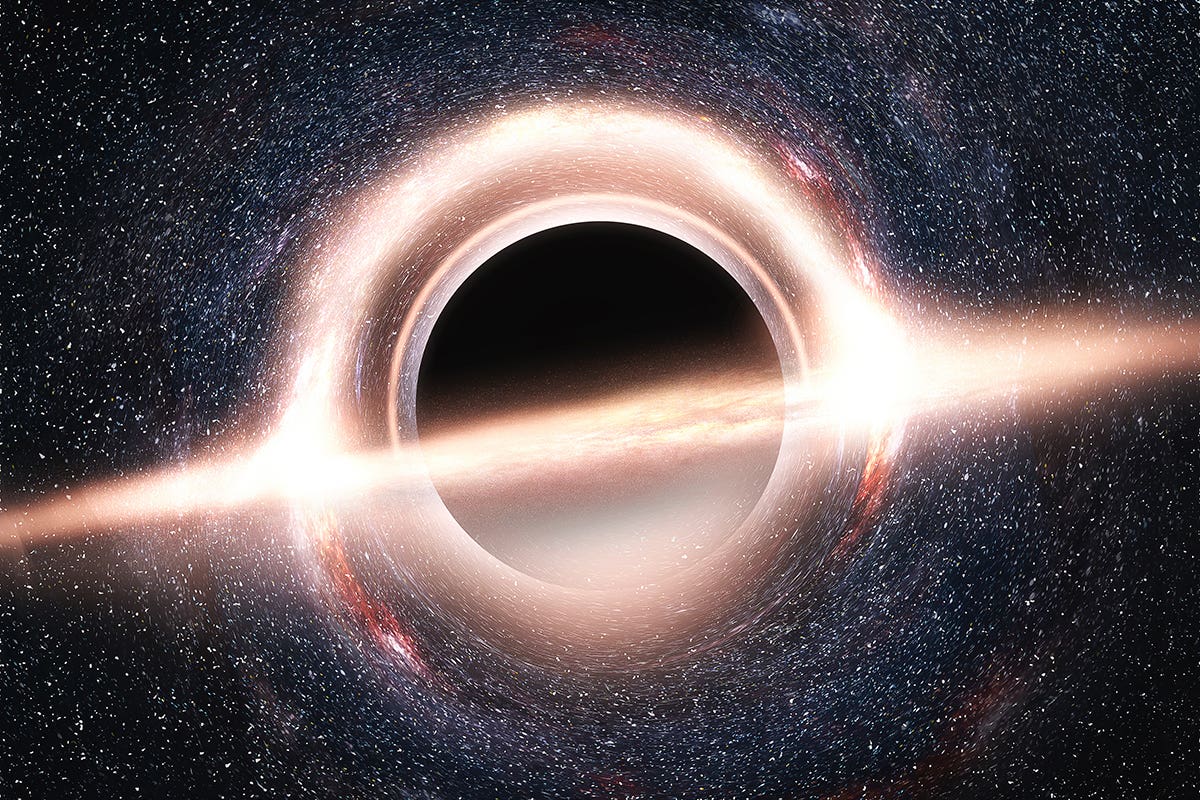Massive black hole found taking a ‘nap’ after overeating
Scientists found a huge dormant black hole in the early universe, revealing new clues about how black holes and galaxies grew.

A newly found dormant black hole, detected just 800 million years after the Big Bang, challenges what scientists thought about cosmic growth. (CREDIT: iStock Photos)
In the first few hundred million years after the Big Bang, something strange happened: many massive black holes already existed. These giants seemed far too large compared to the small galaxies that hosted them. Scientists found that the black holes were overmassive—sometimes 1,000 times bigger relative to their galaxies than similar systems in the local universe.
For years, researchers offered different theories to explain this puzzle. Some proposed that black holes were born heavy, while others argued that smaller ones simply grew very fast. Yet, until recently, no one had the right data to sort these ideas out.
Now, thanks to the JADES (JWST Advanced Deep Extragalactic Survey) project using the James Webb Space Telescope, an international team has made a discovery that changes how scientists view the early universe.
In a galaxy located about 13 billion light-years away, astronomers found a massive black hole that had already formed only 800 million years after the Big Bang—and it is doing something surprising. It's asleep.
A Discovery Made Possible by New Technology
The galaxy, known by its long catalog number but often shortened to GN-1001830, sits in the GOODS-N field. The team used both the Near Infrared Camera (NIRCam) and the Near Infrared Spectrograph (NIRSpec) on Webb to observe it.
The NIRSpec prism revealed something unexpected: a broad Hα emission line, often a sign of an active black hole, but without the usual signs of strong outflows. The broadness and symmetry of the line pointed to the presence of a broad-line region, suggesting a black hole quietly accreting matter.
This black hole is about 400 million times the mass of the Sun, making it one of the biggest ever spotted at this early point in cosmic history. What’s even more startling is its relationship with its host galaxy. Typically, black holes are only about 0.1% of their galaxy’s mass. Here, the black hole accounts for around 40% of the galaxy's mass—a staggering difference.
Related Stories
Despite its size, the black hole is barely feeding. Its accretion rate is only about 0.02 times the Eddington limit, the maximum rate at which a black hole can consume material without blowing it away through radiation pressure. In other words, it is barely eating at all.
"Even though this black hole is dormant, its enormous size made it possible for us to detect," said Ignas Juodžbalis, lead author of the study and a PhD student at Cambridge’s Kavli Institute for Cosmology. "Its dormant state allowed us to learn about the mass of the host galaxy as well. The early universe managed to produce some absolute monsters, even in relatively tiny galaxies."
Dormant Black Holes: Hard to Find, but Full of Clues
Most black holes are discovered by the brilliant glow of the accretion discs that swirl around them. As gas falls toward the black hole, it heats up and emits ultraviolet light. When a black hole is feeding heavily, it shines brightly. When it’s napping, the glow dims, making it harder to detect.
This discovery suggests that many black holes in the early universe might also have been dormant most of the time. That means current surveys could be missing a huge number of them.
Roberto Maiolino, a co-author from Cambridge’s Cavendish Laboratory and Kavli Institute, explained the significance: "It’s likely that the vast majority of black holes out there are in this dormant state—I’m surprised we found this one, but I’m excited to think that there are so many more we could find."
The JWST’s incredible sensitivity made spotting this sleeping giant possible. Without Webb’s powerful instruments, the dim signals from a non-accreting black hole would have gone unnoticed.
The results were published in the journal Nature, and the work was supported by the European Research Council and the UK’s Science and Technology Facilities Council.
Rethinking Black Hole Growth: Born Big or Grew Fast?
Scientists have long thought that black holes form from the remains of massive stars. Over time, they grow by swallowing nearby matter until radiation pressure slows their feeding. The Eddington limit describes how fast they can grow.
However, this new black hole doesn't fit that neat picture. Its massive size, so early in the universe, suggests that either it was born big, or it grew by breaking the rules for short bursts.
"It’s possible that black holes are ‘born big,’ which could explain why Webb has spotted huge black holes in the early universe," said Maiolino. "But another possibility is they go through periods of hyperactivity, followed by long periods of dormancy."
Working with researchers in Italy, the Cambridge team ran computer simulations to test these ideas. Their models suggest that black holes could briefly exceed the Eddington limit. During these periods, they could eat ferociously for about five to ten million years, then sleep for about 100 million years.
"It sounds counterintuitive to explain a dormant black hole with periods of hyperactivity, but these short bursts allow it to grow quickly while spending most of its time napping," said Maiolino.
This cycle of gorging and sleeping would explain how black holes could reach such immense sizes without being constantly luminous. It would also help account for why so many black holes seem missing from observations: they are simply too quiet to spot most of the time.
A New Era for Black Hole Astronomy
For Juodžbalis, the discovery was a pivotal moment early in his research career. "This was the first result I had as part of my PhD, and it took me a little while to appreciate just how remarkable it was," he said. "It wasn’t until I started speaking with my colleagues on the theoretical side of astronomy that I was able to see the true significance of this black hole."
The find opens a new chapter in black hole astronomy. If many supermassive black holes in the early universe went through these cycles of rapid growth and dormancy, then today's theories of galaxy evolution need serious updates. Black holes might have played a much larger role in shaping galaxies than previously thought, even while they appeared inactive most of the time.
With more data expected from JWST and future surveys, scientists hope to uncover more of these sleeping giants. Each new discovery could bring fresh insights into the wild, chaotic early days of the universe.
If this dormant black hole is just the tip of the iceberg, the next few years of research could transform our understanding of how the cosmos grew from its fiery beginnings to the rich structure seen today.
Note: The article above provided above by The Brighter Side of News.
Like these kind of feel good stories? Get The Brighter Side of News' newsletter.
Joshua Shavit
Science & Technology Writer | AI and Robotics Reporter
Joshua Shavit is a Los Angeles-based science and technology writer with a passion for exploring the breakthroughs shaping the future. As a contributor to The Brighter Side of News, he focuses on positive and transformative advancements in AI, technology, physics, engineering, robotics and space science. Joshua is currently working towards a Bachelor of Science in Business Administration at the University of California, Berkeley. He combines his academic background with a talent for storytelling, making complex scientific discoveries engaging and accessible. His work highlights the innovators behind the ideas, bringing readers closer to the people driving progress.



